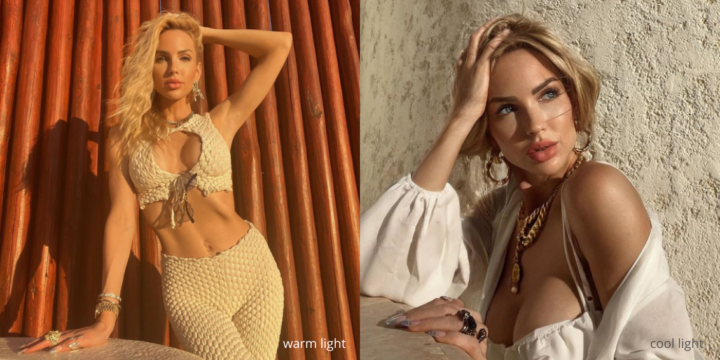When it comes to creating beautiful content and a recognizable brand, your images are key. Lighting is a major component of photo production so today we’re sharing three easy tips to master lighting for your next shoot!
Light Types
First and foremost, consider your light source when taking pictures. There are two types of light you will mainly encounter in your day-to-day; Natural Light and Tungsten Light.
Natural is a pretty self-explanatory, this is the natural light that the sun gives off. Tungsten, in its simplest form, is the term for light that comes off light fixtures. This is the non-natural light in your home that comes from a bulb; lamps, pendants, chandeliers, etc. Understanding your light source is an important piece in understanding the qualities they hold and how you can use and manipulate them for a more aesthetically pleasing image.
Soft Light vs. Hard Light
Natural light can be either “hard” or “soft”. Hard light is that bright sunlight you will encounter in the middle of the day or the light coming in hard and hot from a window. This will give you hard, dark shadows.
In contrast, soft light is the light we get when the sun is diffused in some way; a cloudy day, indoors when the sun is not directly shining in, the shade next to a building, etc. This will give you a more even light with soft, light shadows.
For a flattering selfie/portrait, choosing soft light is a good rule of thumb. If you want to use soft light in your home; mid day is usually a good time. The sun is over head, so you won’t have it directly blazing in. Place yourself facing the window with your phone or camera in between you and the window. You can also try angling the way you’re facing the window slightly to give the shadows in your image a bit more dimension.

If you’re looking for a more edgy image to show off clothing or give a vibe, hard light is always fun to work with. To get hard light, try going outside at noon. The sun is high and strong. This is not great for selfies, but can be super cool for pulled back shots to show off location or clothing. Just be aware of “raccoon eyes” which is when you get dark shadows around the eyes. Alleviate these by turning another direction, looking off camera or simply slipping on a pair of sunglasses. Hard light can also be achieved indoors by facing the window at the times of day when sun is shining directly in.
Light Temps
Light also gives off different colors or “temperatures.” Natural gives off a “cool” hue being a more white/blue whereas Tungsten gives off a “warm” hue being more yellow. There are, of course, exceptions to this rule. Sunset is natural light, but gives off that super warm, luxurious golden glow, or you can buy special bulbs that give you that cooler light to mimic natural light. Start challenging yourself to look around and notice the difference in the temperatures of the light you encounter day to day. If you want to try bulbs in your home that have a more natural like feel, look for bulbs that say “daylight” or have a temperature around 5000k like the bulbs here, here and here.
Without having a professional photographer in your day-to-day, it’s important to refrain from mixing your light temperatures. If you’re indoors, try to find a bright naturally lit room, and turn off any lamps to keep the temperature of the light consistent through out (or try the natural bulbs!). If you are using a ring light or LED lights for your selfies, be sure to purchase one that is bicolor, so you can adjust the color temperature to match the light in the space surrounding you.
